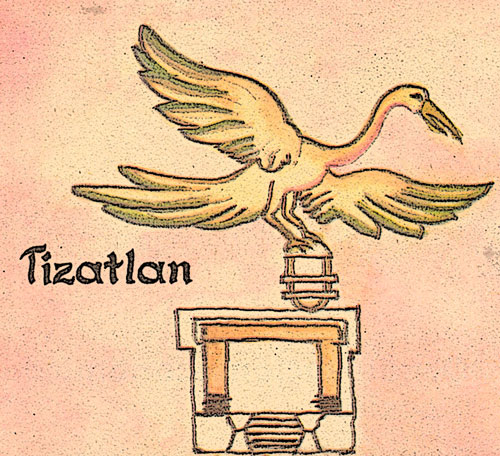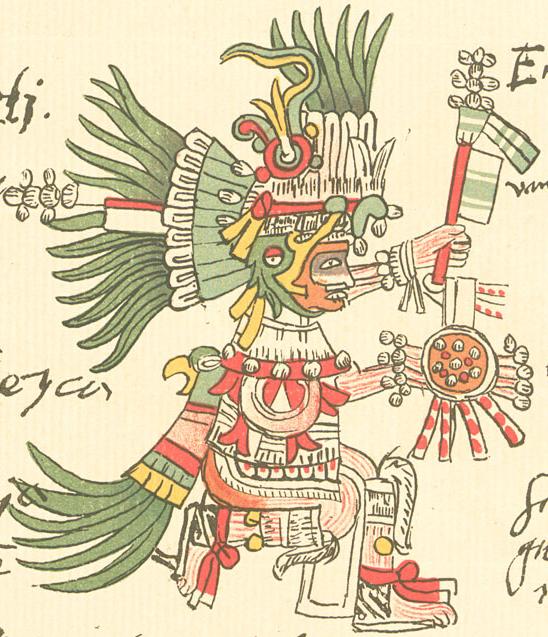|
Xayacamach
Xayacamach of Tizatlan was an Aztec poet from the Pre-Columbian state of Tlaxcala (Nahua state), Tlaxcallan, born between 1450 and 1455. He was the son of the "Señor de Aztahua de Tizatlan" (Lord of Aztahua of Tizatlan). He took his father's place as governor, and assisted at the meeting called by Tecayehuatzin of Huextonzinco to converse on the meaning of "flower and song", which is where we get both of his recorded poems. Tecahueyatzin said of him: A beautiful song is heard Xayacamach Tlapeltuetzin raises it these are his flowers It is known that he died before the year 1500, because by this time his brother, Xicotencatl I, Xicohtencatl, was the governor of the altepetl of Tizatlan. He sided with the Huastec civilization, Huastecs in their war with Mexica and was killed (Leon-Portilla and Shorris 670). Sources * *Leon-Portilla, Miguel and Shorris, Earl. ''In the Language of Kings: An Anthology of Mesoamerican Literature--Pre-Columbian to the Present''. W. W. Norton & Comp ... [...More Info...] [...Related Items...] OR: [Wikipedia] [Google] [Baidu] |
Xicotencatl I
Xicotencatl I or Xicotencatl the Elder (c. Aztec calendar, 11 House (1425) – c. Aztec calendar, 4 Rabbit (1522)) was a long-lived ''teuctli'' (elected official) of Tizatlan, a Nahua peoples, Nahua ''altepetl'' (city-state) within the Tlaxcala (Nahua state), Confederacy of Tlaxcala, in what is now Mexico. He was instrumental in allying the Tlaxcaltec, Tlaxcaltecs with the Spain, Spanish to overthrow the Aztec Empire, after which he converted to Christianity under the name of Lorenzo Xicotencatl or Don Lorenzo de Vargas. Etymology His Nahuatl name, pronounced , is sometimes spelled Xicohtencatl. Early life At the time of the Spanish conquest of the Aztec Empire he was very old and of poor health. He was instrumental in aligning the Tlaxcala with Hernán Cortés' Spaniards.Diaz, B., 1963, The Conquest of New Spain, London: Penguin Books, Tlaxcalan historian Diego Muñoz Camargo wrote of him that he was more than 120 years old and that he could only see Cortés if he had some ... [...More Info...] [...Related Items...] OR: [Wikipedia] [Google] [Baidu] |
Tlaxcala (Nahua State)
Tlaxcala ( , 'place of maize tortillas') was a pre-Columbian city and state in central Mexico. During the Spanish conquest of the Aztec Empire, the Tlaxcaltecs allied with the Spanish Empire against their hated enemies, the Aztecs, supplying a large contingent for and sometimes most of the Spanish-led army that eventually destroyed the Aztec Empire. Tlaxcala was completely surrounded by Aztec lands, leading to the intermittent so called " flower war" between the Aztecs and the Tlaxcalans, fighting for their independence, as the Aztecs wanted to absorb them into the empire. History The Tlaxcalans arrived in Central Mexico during the Late Postclassic. They first settled near Texcoco in the valley of Mexico, between the settlement of Cohuatlinchan and the shore of Lake Texcoco. After some years the Tlaxcallans were driven out of the valley of Mexico and moved to the east, splitting into three groups along the way. While one group continued north towards the modern state of ... [...More Info...] [...Related Items...] OR: [Wikipedia] [Google] [Baidu] |
Aztec
The Aztecs ( ) were a Mesoamerican civilization that flourished in central Mexico in the Post-Classic stage, post-classic period from 1300 to 1521. The Aztec people included different Indigenous peoples of Mexico, ethnic groups of central Mexico, particularly those groups who spoke the Nahuatl, Nahuatl language and who dominated large parts of Mesoamerica from the 14th to the 16th centuries. Aztec culture was organized into city-states (''altepetl''), some of which joined to form alliances, political confederations, or empires. The Aztec Empire was a confederation of three city-states established in 1427: Tenochtitlan, the capital city of the Mexica or Tenochca, Tetzcoco (altepetl), Tetzcoco, and Tlacopan, previously part of the Tepanec empire, whose dominant power was Azcapotzalco (altepetl), Azcapotzalco. Although the term Aztecs is often narrowly restricted to the Mexica of Tenochtitlan, it is also broadly used to refer to Nahuas, Nahua polities or peoples of central Pre ... [...More Info...] [...Related Items...] OR: [Wikipedia] [Google] [Baidu] |
Pre-Columbian
In the history of the Americas, the pre-Columbian era, also known as the pre-contact era, or as the pre-Cabraline era specifically in Brazil, spans from the initial peopling of the Americas in the Upper Paleolithic to the onset of European colonization of the Americas, European colonization, which began with Christopher Columbus's voyage in 1492. This era encompasses the history of Indigenous peoples of the Americas, Indigenous cultures prior to significant European influence, which in some cases did not occur until decades or even centuries after Columbus's arrival. During the pre-Columbian era, many civilizations developed permanent settlements, cities, agricultural practices, civic and monumental architecture, major Earthworks (archaeology), earthworks, and Complex society, complex societal hierarchies. Some of these civilizations had declined by the time of the establishment of the first permanent European colonies, around the late 16th to early 17th centuries, and are know ... [...More Info...] [...Related Items...] OR: [Wikipedia] [Google] [Baidu] |
Tizatlan
Tizatlan, in pre-Columbian Mexico, was one of the four independent altepemeh (polities, sing. altepetl) that constituted the confederation of Tlaxcallan. Today Tizatlan is a part of the modern city of Tlaxcala, and the Pre-Columbian city is visible as a small archaeological site in the San Esteban Tizatlán district of the city. The site is in the state of Tlaxcala in central Mexico. The name is Nahuatl and contains the elements ''tizatl'' (chalk) and ''tlan'' (place). History Tizatlan was the third of the four altepemeh to be founded, but at the time of the Spanish conquest of Mexico it was, along with Ocotelolco, the most powerful of the four allied communities. Where Ocotelolco held the economical power, having the main market in the region, Tizatlan had the military power and commanded the Tlaxcallan armies. When the Spanish arrived in Mexico Tizatlan was ruled by the aging Xicotencatl I "the Elder" aided by his son the military leader Xicotencatl II "the Younger". ... [...More Info...] [...Related Items...] OR: [Wikipedia] [Google] [Baidu] |
Altepetl
The ( , plural ''altepeme'' or ''altepemeh'') was the local, ethnically-based political entity, usually translated into English as "city-state", of pre-Columbian Nahuatl-speaking societiesSmith 1997 p. 37 in the Americas. The ''altepetl'' was constituted of smaller units known as ''calpolli'' and was typically led by a single dynastic ruler known as a ''tlatoani'', although examples of shared rule between up to five rulers are known. Each ''altepetl'' had its own jurisdiction, origin story, and served as the center of Indigenous identity. Residents referred to themselves by the name of their ''altepetl'' rather than, for instance, as "Mexicas". ''"Altepetl"'' was a polyvalent term rooting the social and political order in the creative powers of a ''sacred mountain'' that contained the ancestors, seeds and life-giving forces of the community. The word is a combination of the Nahuatl words (meaning "water") and (meaning "mountain"). A characteristic Nahua mode was to imagine ... [...More Info...] [...Related Items...] OR: [Wikipedia] [Google] [Baidu] |
Huastec Civilization
The Huastec civilization (sometimes spelled Huaxtec or Wastek) was a pre-Columbian civilization of Mesoamerica, occupying a territory on the Gulf coast of Mexico that included the northern portion of Veracruz Veracruz, formally Veracruz de Ignacio de la Llave, officially the Free and Sovereign State of Veracruz de Ignacio de la Llave, is one of the 31 states which, along with Mexico City, comprise the 32 Political divisions of Mexico, Federal Entit ... state, and neighbouring regions of the states of Hidalgo (state), Hidalgo, Querétaro, San Luis Potosí, and Tamaulipas.Diehl 2000, pp. 184–185. The Huastec people were an early offshoot of the Maya peoples that migrated northwards. Surviving remains from the Huastec civilization include several large archaeological sites, a well-preserved temple, and a large amount of stone sculpture. By the Mesoamerican chronology#Postclassic period, Late Postclassic (c. AD 1200–1521), the Huastecs had developed Metallurgy in pre-Columb ... [...More Info...] [...Related Items...] OR: [Wikipedia] [Google] [Baidu] |
Mexica
The Mexica (Nahuatl: ; singular ) are a Nahuatl-speaking people of the Valley of Mexico who were the rulers of the Triple Alliance, more commonly referred to as the Aztec Empire. The Mexica established Tenochtitlan, a settlement on an island in Lake Texcoco, in 1325. A dissident group in Tenochtitlan separated and founded the settlement of Tlatelolco with its own dynastic lineage. In 1521, their empire was overthrown by an alliance of Spanish conquistadors and rival indigenous nations, most prominently the Tlaxcaltecs. The Mexica were subjugated under the Spanish Empire for 300 years, until the Mexican War of Independence overthrew Spanish dominion in 1821. Today, descendants of the Mexica and other Aztecs are among the Nahua people of Mexico. Since 1810, the broader term ''Aztec'' is often used to describe the Mexica. When a distinction is made, Mexica are one (dominant) group within the Aztecs. Names The ''Mexica'' are eponymous of the place name Mexico (''Mēxihco ... [...More Info...] [...Related Items...] OR: [Wikipedia] [Google] [Baidu] |
1450s Births
*
{{Number disambiguation ...
145 may refer to: *145 (number), a natural number * AD 145, a year in the 2nd century AD *145 BC, a year in the 2nd century BC * 145 (dinghy), a two-person intermediate sailing dinghy * 145 (South) Brigade, a regional brigade of the British Army that saw active service in both the First and the Second World Wars * 145 (New Jersey bus), a New Jersey Transit bus route * 145 Adeona, a main-belt asteroid * Alfa Romeo 145, a 3-door hatchback * Honda 145, a compact car See also * List of highways numbered 145 The following highways are numbered 145: Australia * Lower Barrington Road, Paloona Road, Melrose Road, Bellamy Road, Forthside Road (Tasmania) * Inverleigh–Winchelsea Road (Victoria) Canada * Winnipeg Route 145 * New Brunswick Route 145 * ... [...More Info...] [...Related Items...] OR: [Wikipedia] [Google] [Baidu] |
15th-century Deaths
The 15th century was the century which spans the Julian calendar dates from 1 January 1401 (represented by the Roman numerals MCDI) to 31 December 1500 (MD). In Europe, the 15th century includes parts of the Late Middle Ages, the Early Renaissance, and the early modern period. Many technological, social and cultural developments of the 15th century can in retrospect be seen as heralding the " European miracle" of the following centuries. The architectural perspective, and the modern fields which are known today as banking and accounting were founded in Italy. The Hundred Years' War ended with a decisive French victory over the English in the Battle of Castillon. Financial troubles in England following the conflict resulted in the Wars of the Roses, a series of dynastic wars for the throne of England. The conflicts ended with the defeat of Richard III by Henry VII at the Battle of Bosworth Field, establishing the Tudor dynasty in the later part of the century. Consta ... [...More Info...] [...Related Items...] OR: [Wikipedia] [Google] [Baidu] |
Tlaxcaltec Nobility
The Tlaxcallans, or Tlaxcaltec, are an indigenous Nahua people who originate from Tlaxcala, Mexico. The Confederacy of Tlaxcala was instrumental in overthrowing the Aztec Empire in 1521, alongside conquistadors from the Kingdom of Spain. The Tlaxcallans remained allies of the Spanish for 300 years until the Independence of Mexico in 1821. Pre-Colonial history The Tlaxcaltec were a Nahua group, one of the 7 tribes which migrated from their original homeland in the north alongside the Mexica and 5 other tribes. After settling in what is now called Tlaxcala they formed a conglomeration of three distinct ethnic groups who spoke Nahuatl, Otomi and Pinome that comprised the four city-states (''Altepetl'') of ''Tlaxcallān'' or Tlaxcala. Each of the four cities supposedly had equal say in this confederation, but eventually, the Nahuatl speakers became the dominant ethnic group. By the time of European contact, the city of Tizatlan was effectively controlling Tlaxcala. Despite early ... [...More Info...] [...Related Items...] OR: [Wikipedia] [Google] [Baidu] |





